
info@apandatour.com
+86 28 8521 4086

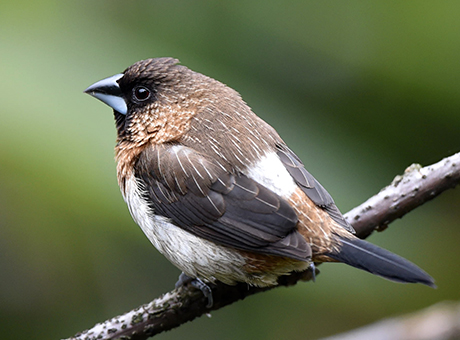
City Bilingual Bird-watching for the Flying Beauties
Age: Children aged 8-13
Date: from Mar. 11th, 2022 Trip Code:BW001
Guide: Bella
Price: 200USD/pax/series(every series includes 6 classes)
Trip Focus: City wildlife+Bird-watching
Route: Huanhuaxi Park-Donghu Park-Wangjiang Tower Park-Qinglong Lake Wetland
 Overview
OverviewBird-watching is a free ticket to enjoy the nature show. The City Bilingual Bird-watching for the flying beauties is designed by the ApandaTour team with an aim to stay close to the city while having a chance to embrace nature. We use another language to know your bird friends around you, explore the secrets of nature, and enjoy the various charm of living creatures.
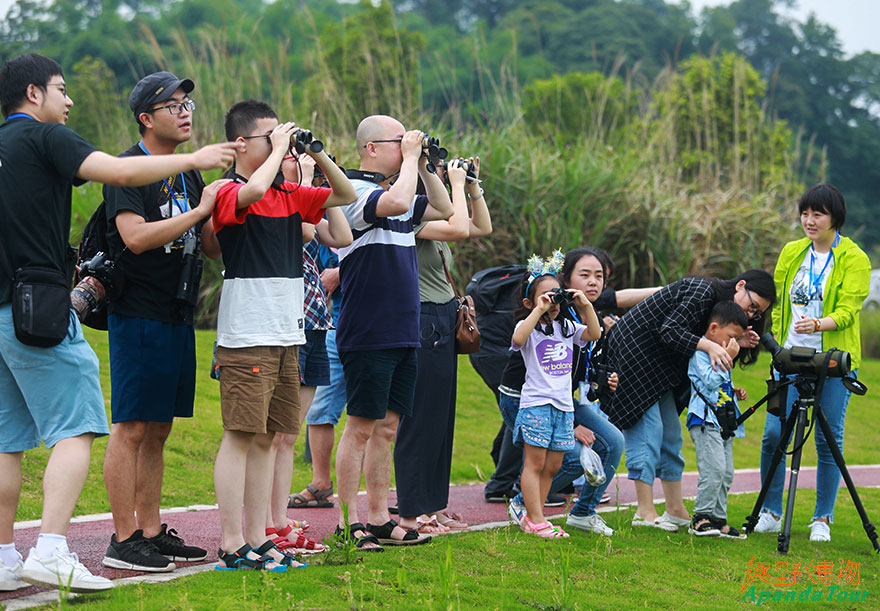
▲ ApandaTour bird-watching activities around Chengdu
What is bilingual bird-watching?
1. There are lots of information hide in the bird names given in different culture.
Bird names are often related to their body features, feather color, habits, and living environment. For example, White-browed Laughingthrush is commonly seen in some cities, White-browed refers to its white eyebrow while Laughing possibly refers to the calls which sound like a laugh. Another example, Common Kingfisher, the word Common may mean they are commonly seen, while Kingfisher shows their great fishing skill. Through studying bird names, we can get a better understanding of the birds, and their classification. They help us identify birds more accurately.
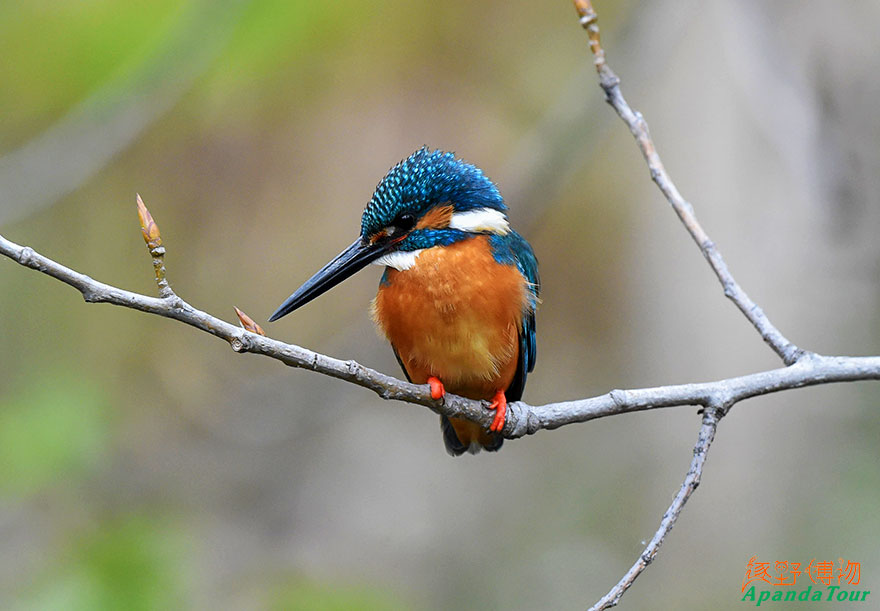
▲ Common Kingfisher
2. Experiencing fun from using another language in the natural environment while searching for birds.
During our bird-watching, we learn how to describe body parts, feather color, behavior, and habitat environment in Chinese or English. These experiences will help us improve our oral expression and communication skills. Through our bilingual activities and games, you can gain a new experience of learning a language during bird-watching activities.
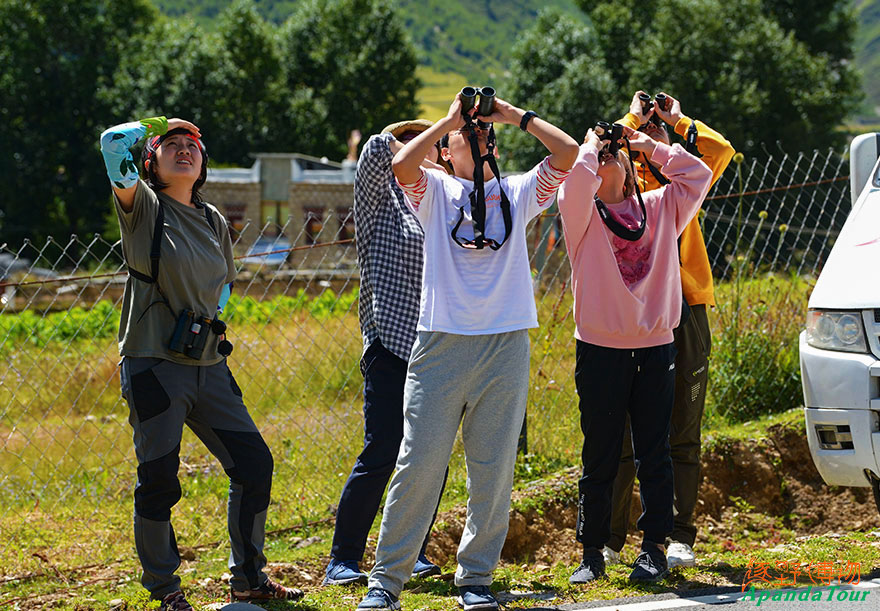
▲ ApandaTour Bird-watching trip in Western Sichuan
3. Know nature from birds and embrace the world with English.
Bird-watching is a popular healthy outdoor activity in European countries and the US. Now it has become an influential worldwide activity. The bird fairs and bird races which are held every year in different parts of the world, attract countless bird professionals and bird-watchers to participate in, experience fun from bird-watching with others, and spread the eco-friendly concepts of bird conservation. In China, bird-watching has increasingly become popular among nature lovers. They participate in bird races and communicate with bird-watchers from all over the world. These help them start a new link with the world.
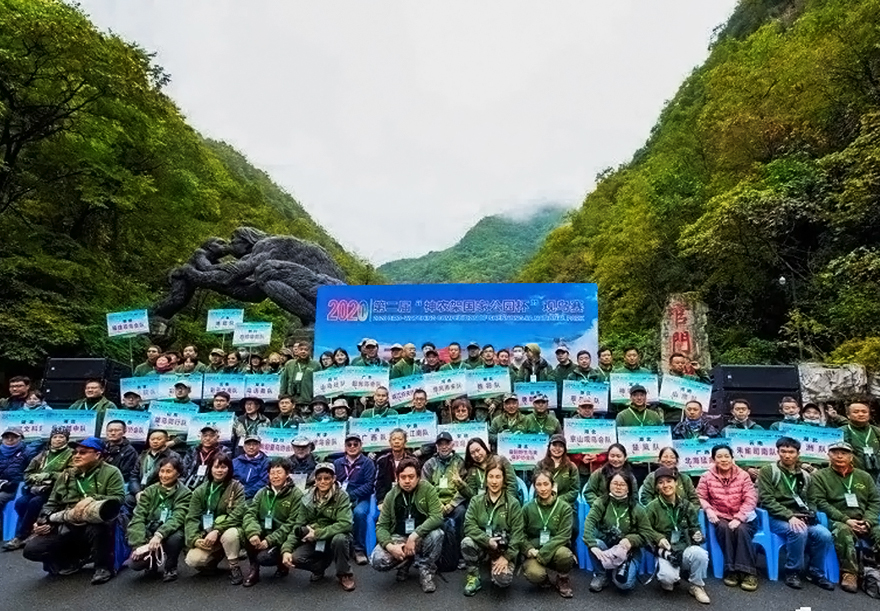
▲ A bird-watching team formed by our teachers participated in the second Shennongjia Bird Race and won the championship
4. We have a team of bilingual bird experts with rich experiences.
With over 10 years of working with English-speaking trips, our team members have rich knowledge and experiences of guiding in both English and Chinese for people with strong interests in birds, mammals, Buddhism, and Tibetan culture. We have served numerous nature lovers from different countries in their nature exploration activities, translated the book Bird-watcher's Bible from English to Chinese, and guided the BBC team in their Sichuan photography trip. Our profound nature knowledge, rich experiences in the travel industry, and good command of both English and Chinese language enable us to bring you an inspiring bilingual bird-watching experience.
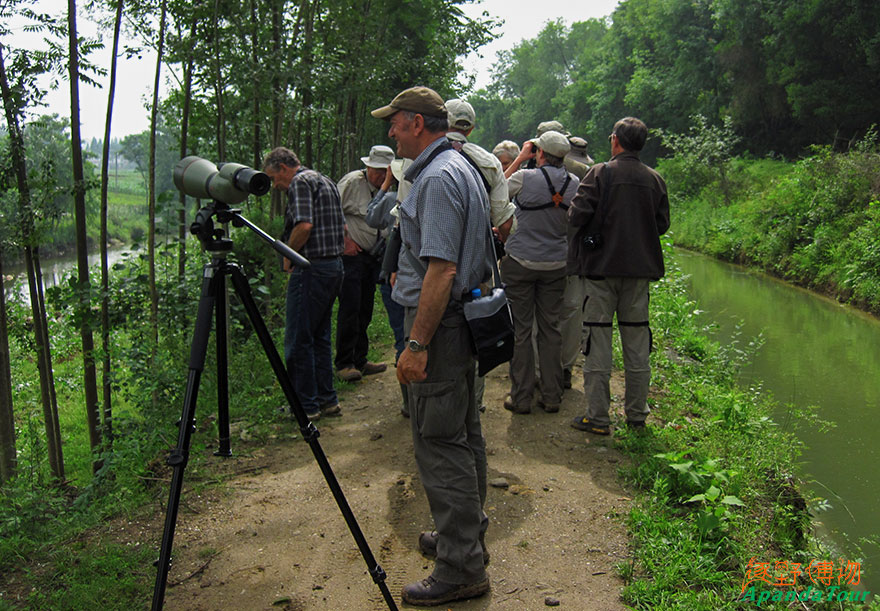
▲ Guiding English-speaking Bird-watching Trips by ApandaTour teachers
Trip Targets
1. Cultivate an interest in observing birds:Get to know our bird friends that are often easily ignored by us, visit the habitats for different birds, discover the surviving wisdom of birds, enhance our curiosity to explore nature, and build up our interests in ecology and animal behaviors;
2. Learn how to observe birds:Learn how to use tools for bird-watching such as the spotting scope, binoculars, and field guide with the initial skill of observation and identification;
3. Use bilingual language in natural environment:Through bird-watching, we bring language learning and daily language use into a real natural environment, learn bird knowledge in both English and Chinese and train the participants to communicate with their nature friends in multiple ways;
4. Nurture comprehensive capabilities:Cultivate our aesthetic taste during bird-watching, unconsciously build up a positive attitude of cherishing life, protecting birds and nature, and living in harmony with nature.
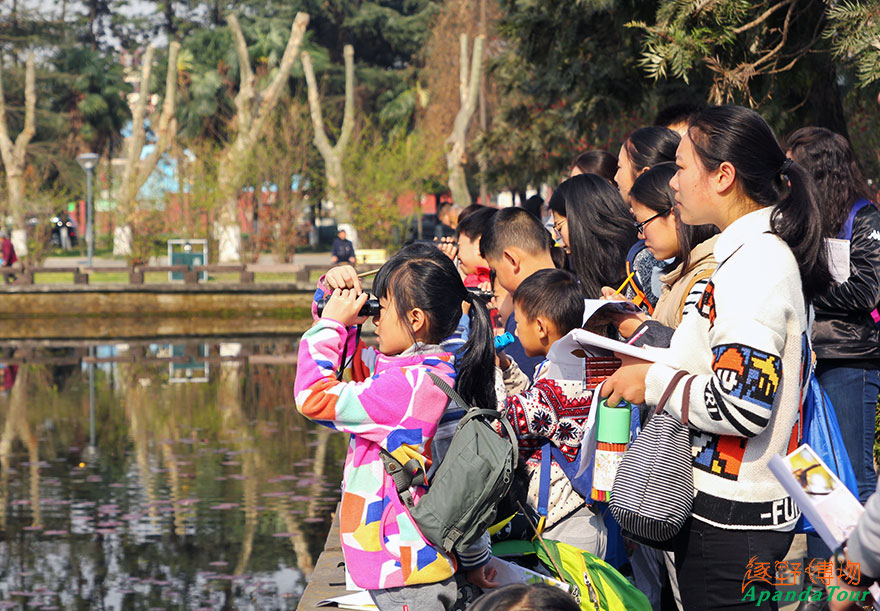
▲ ApandaTour past bird-watching activities
Trip Highlights
1. Learn and familiarize yourself with over 30 bird species which are commonly seen in Chengdu such as Light-vented Bulbul, White-browed Laughingthrush, Spotted Dove, White Wagtail, Common Kingfisher, Black-capped Night Heron, Grey Heron, Plumbeous Water Redstart, Grey-capped Greenfinch, Chinese Black Bird, and Black-throated Tit;
2. Learn how to describe in bilingual language the physical features, body structure, feather color, habits, and habitats. We will make our bilingual bird-watching notes, and exchange ideas with other participants concerning the observation;
3. We will have colorful and interesting nature experiences and interactive games to know the blessing and nurturing of nature, and achieve our goal of enjoying nature, unveiling nature, and growing in nature;
4. As a little researcher to participate in the recording and making the Chengdu Spring Bird Observation List.
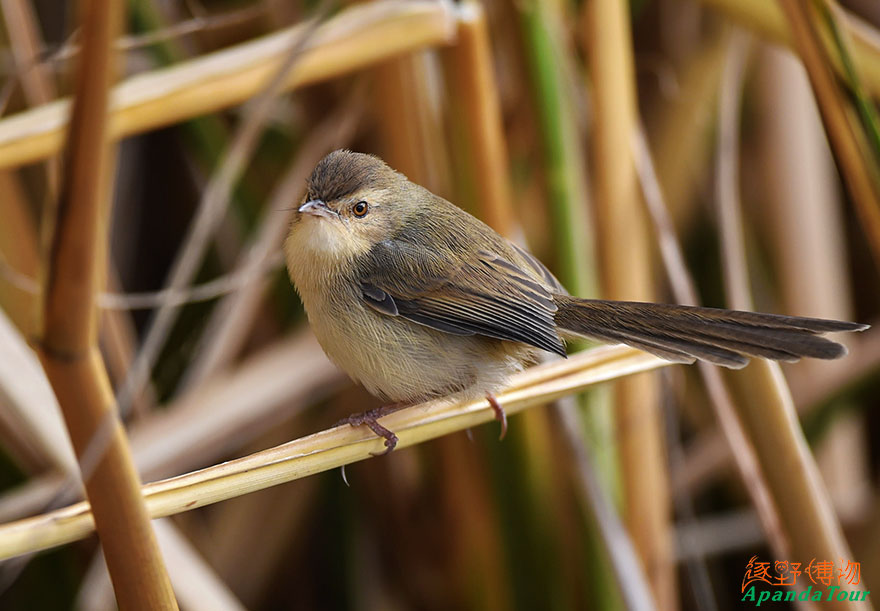
▲ Plain Prinia —— City Wetlands Bird Species
 Itinerary
Itinerary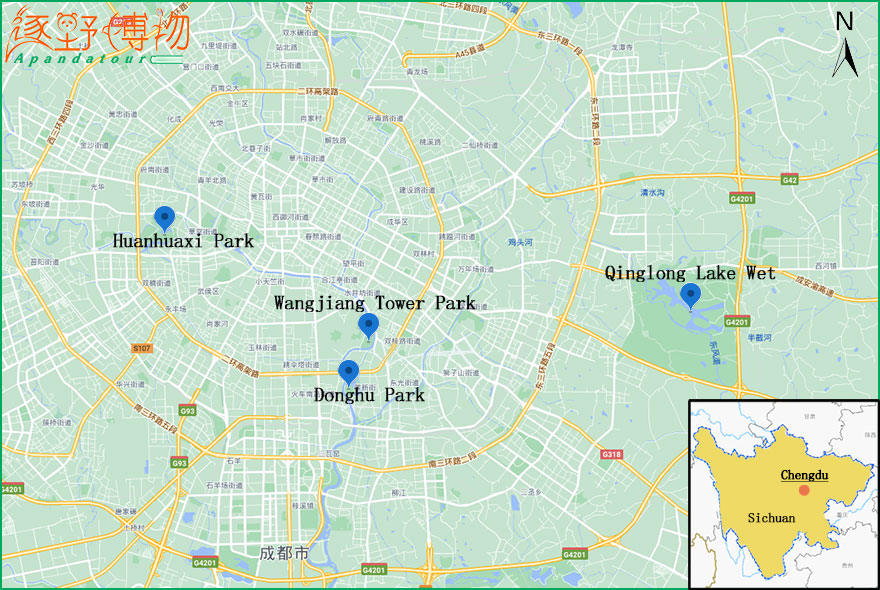
▲ Map
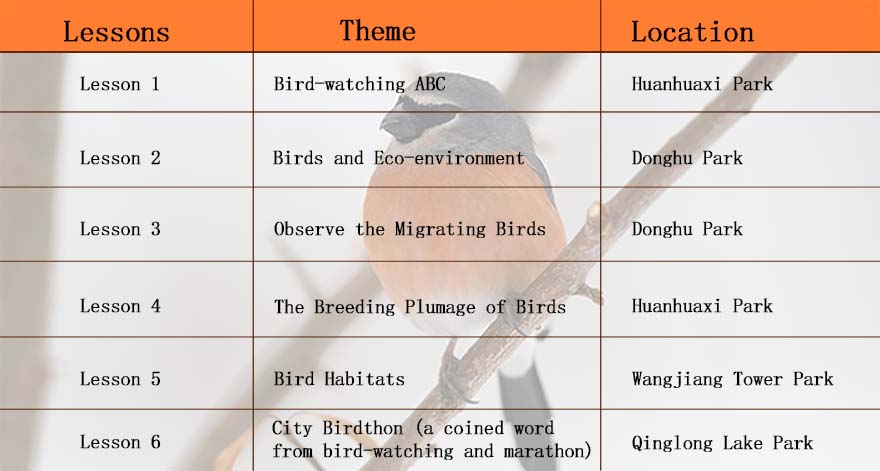
▲ Class Arrangement
The First Class: Bird-watching ABC
Waterbirds are always good for beginners to start because these birds are relatively big in body size, often visible in open waters, and move slowly. The common bird in city parks like Little Egret, Little Grebe, and Common Moorhen is ideal observation targets for bird-watching beginners to gain initial knowledge about bird body structure, and morphological features and learn how to take bird-watching notes.
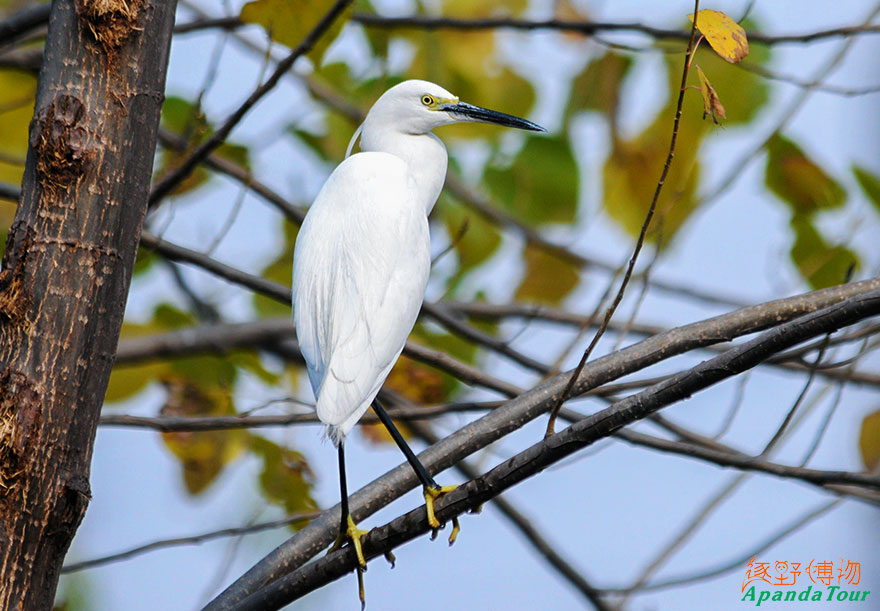
▲ Little Egret——a city wetlands bird
The Second Class:Birds and Their Habitats
We will observe various forest birds and water birds such as Light-vented Bulbul, White Wagtail, Plumbeous Water Redstart, and Black-capped Night Heron, learn about their habitats, and how they adapt to the living environment, and the surviving wisdom they have from the perspective of ecology. We will also discuss the role of city parks and wetlands have played in birds conservation, and anticipate our ideal homeland coexisted by human beings and birds in harmony.
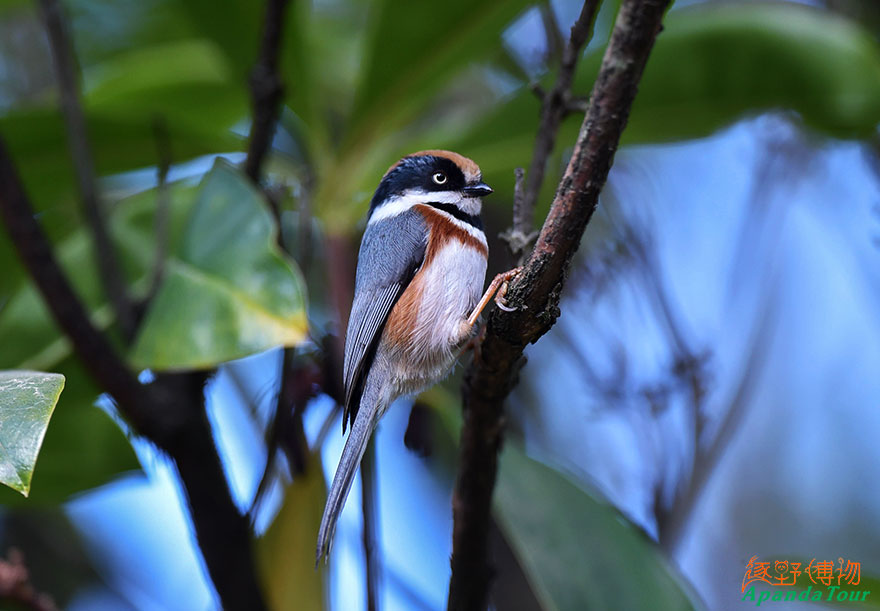
▲ Black-throated Tit——a forest bird which is commonly seen in cities
The Third Class:Observe the Migrating Birds
Migrating birds possibly make one of the most spectacular sceneries in the world. Every year in Spring and Autumn, migrant birds will migrate along their fixed routes between their breeding and wintering grounds by strictly following their own migration time. We will observe the migrating birds which are commonly seen during the migration season and learn about the causes leading to their migration and impacting factors on their migration. You will also understand the difficulties of migrating birds. We will make our migrating bird's protection agreement to maintain a good ecological environment for the migrating birds.
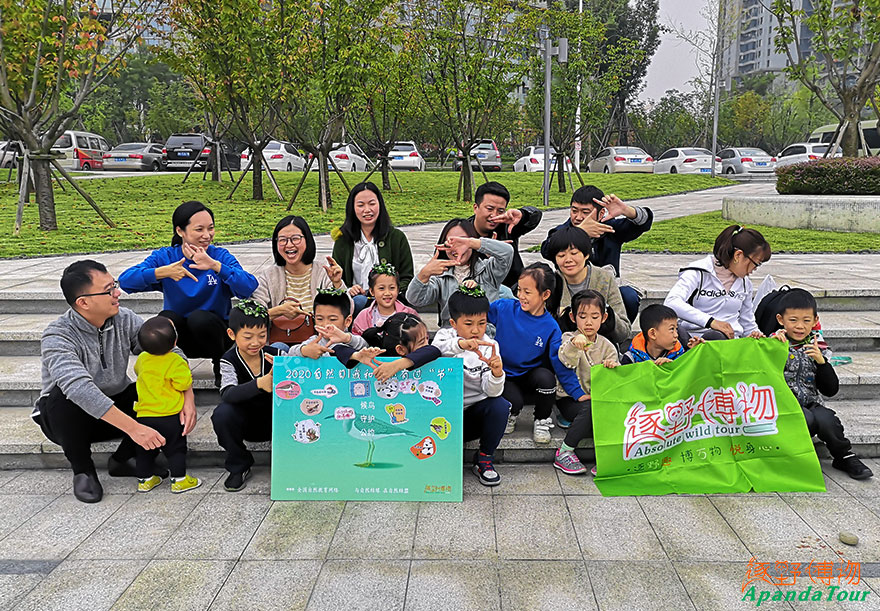
▲ Observing migrating birds during Nature Day in 2020
The Fourth Class:The Breeding Plumage of Birds
Nature bestows birds with colorful feathers. Is there any secret information hiding behind? Why does the plumage of male birds become more beautiful during the mating season? When we explore birds of different plumage, compare the plumage differences between male and female birds, what kind of discovery and ideas can we find?
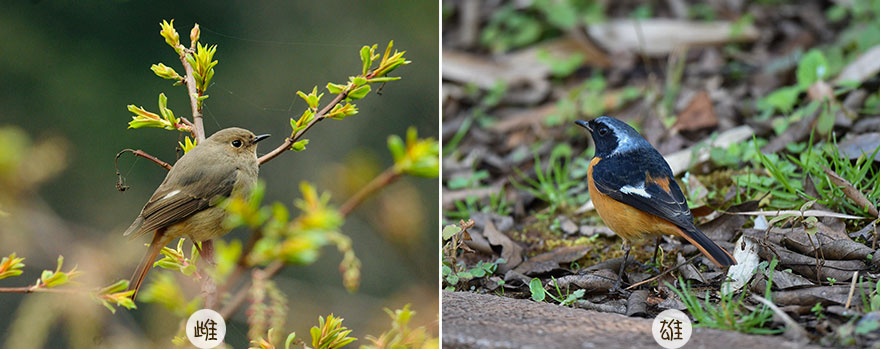
▲ Daurian Redstart with different plumage for male and female birds
The Fifth Class:Bird Habitats
Many birds are born "architects". As a sanctuary for breeding and growth place for nestlings, the nest meticulously built by parent birds always has some secrets. When we observe closely at a reasonable distance, we can find out some interesting behaviors during the mating season. You will realize that different birds actually have different strategies for nest-site selection and ways of nest building. In the class, we will also learn the correct way of helping wild birds.
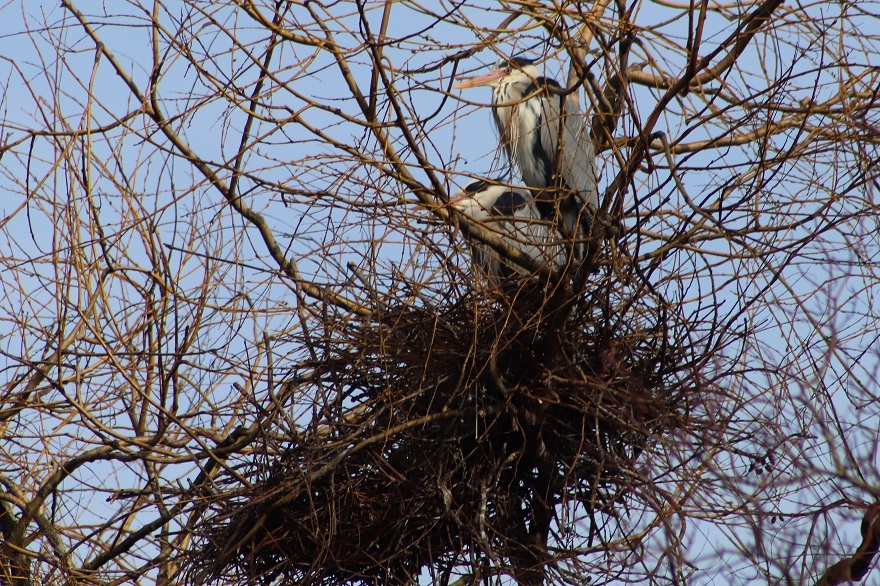
▲ Grey herons building a nest
The Sixth Class:City Birdthon ( a coined word from bird-watching and marathon )
Hope to test and improve your bird-watching skills? Nothing is comparable to participating in an exciting time-limited bird-watching marathon. The race adopts a typical model of international bird races. Inside a city park, the participants need to complete their bird list, which will be evaluated, selected, and questioned by experts. The winner will be granted an award and the participants will complete the Chengdu Spring Bird Observation List.
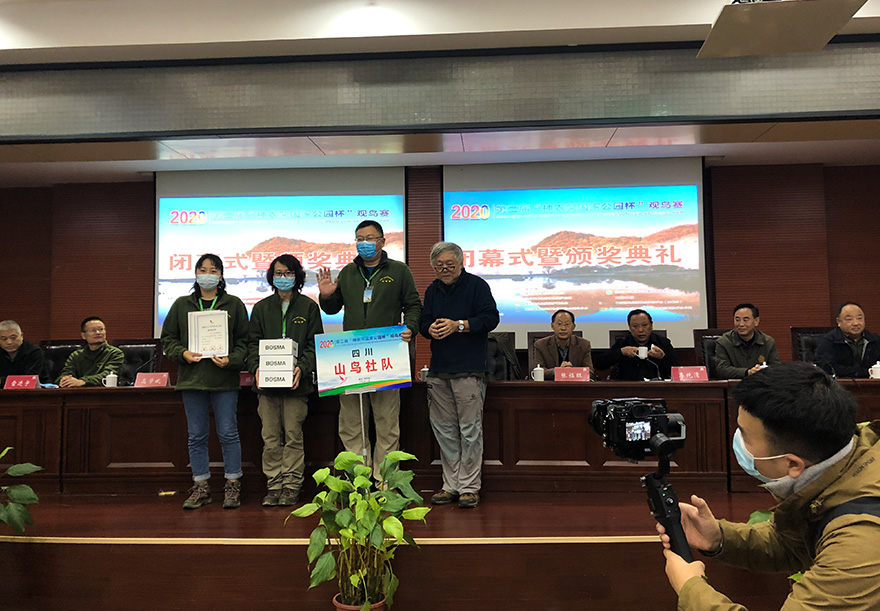
▲ Our team was granted an award by renowned professor He Fengqi
 Guide(s)
Guide(s)
Bella Zhang
A bilingual nature teacher, culture interpreter, guide for birds and mammals
Being born and nurtured in a Bai family in Dali of Yunnan Province, Bella has shown strong love and curiosity toward nature at a young age thanks to the excellent ecological environment in her hometown. She joined our company after graduation from Sichuan Agriculture University and became a nature guide for ecotour trips, which were planned for nature and wildlife lovers from home and abroad. She is widely respected and loved by her clients because of her fluent English, profound knowledge, and great service. In the past five years, she has traveled to most places in Yungui Plateau, Qinghai-Tibet Plateau, and mountains in southwest China and built up her rich knowledge in the birds, animals, and cultural resources in these areas. She is happy and good at sharing her knowledge. She hopes to help both old and young travelers of ApandaTour to seek fun from nature and enjoy it, reconnect themselves with nature.
 Dates & Prices
Dates & PricesLocation:Huanhuaxi Park, Donghu Park, Wangjianglou Park, and Qinglonghu Park
Dates:The first series, a half-day class on March 11 and 25, April 8 and 22, May 6 and 20 in 2023; The second series, a half-day class on March 12 and 26, April 9 and 23, May 7 and 21 , 2023
Target Participant: Children aged 8-13 who are capable of participating independently
Trip Size:10-20 pax/series, minimum class is 8
Trip Price:200USD/pax/series ( every series includes 6 classes )
The price includes: class designing, material preparation, the service of teachers, and insurance
About gears needed for class:We provide a high-quality spotting scope for the whole group and a pair of binoculars for participants to use for free during the class
The price doesn't include:transportation, expenditure of personal nature, and any items not specified as being included in the itinerary
 Logistics
LogisticsTransportation:Get to the designated site on your own. We will inform the participants about each class site prior to the class series start.
Safety Measures:
1. All around process control and safety check before the start of the trip.
2. Staff with AHA first aid certificate and first aid kit during the whole trip.
3. Detailed rules and reminders for the trip and ensure all the participating parents and children know them.
4. Measures for epidemic prevention: we will prepare epidemic prevention materials such as surgery masks, pure alcohols, hand sanitizer, and thermometer. We will have a temperature check before the start of our trip activities.
 FAQs
FAQsHow long is each class?
It takes about 3 hours for each class, or from 9-12 in the morning or 2-5 in the afternoon. The program can be customized.
Can I participate in a single class?
The series of 6 classes are closely inner-connected, will provide systematic training about bird-watching skills, Language practice, and the conservation of birds. We only open a very limited number to single class participants when there are students asking for leave temporarily.